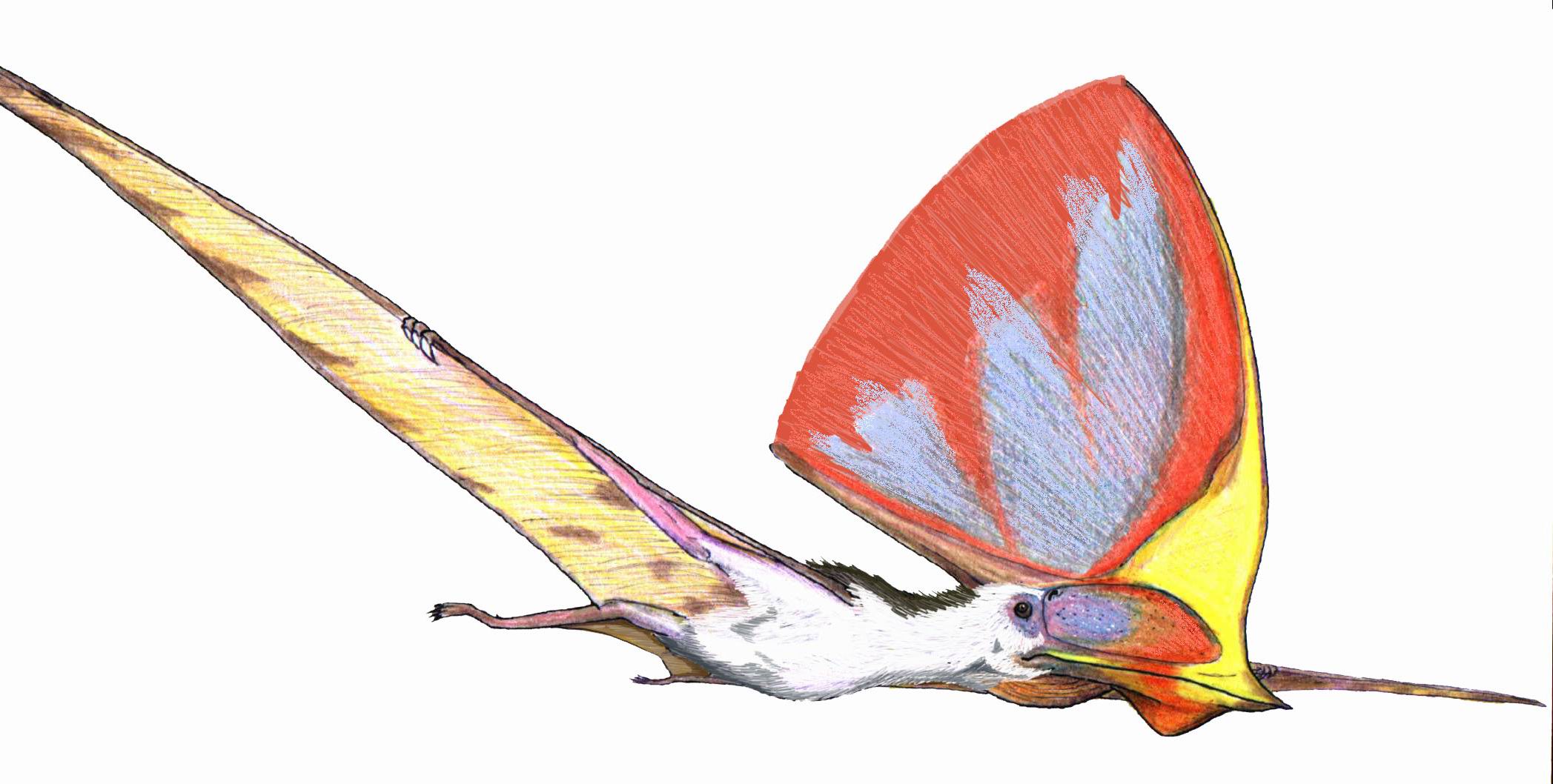- Tupandactylus
Taxobox
name = "Tupandactylus"

image_caption ="Tupandactylus imperator"
fossil_range =Early Cretaceous
regnum =Animal ia
phylum = Chordata
classis = Sauropsida
ordo =Pterosauria
subordo =Pterodactyloidea
familia =Tapejaridae
subfamilia =Tapejarinae
genus = "Tupandactylus"
genus_authority = Kellner & Campos, 2007
subdivision_ranks =Species
subdivision =
* "T. imperator" (Campos & Kellner, 1997 [originally "Tapejara"] ) (type)
synonyms =
* "Ingridia" Unwin & Martill, 2007"Tupandactylus" (meaning "Tupan finger", in reference to the Tupi thunder god) is a
genus of tapejaridpterodactyloid pterosaur from theEarly Cretaceous Santana Formation ofBrazil . It is notable for its large cranial crest, composed partly of bone and partly of soft tissue."Tupandactylus" is based on MCT 1622-R, an almost complete skull, found in the Crato Member of the Santana Formation. It was initially described as a
species of "Tapejara",cite journal |last=Campos |first=D.A. |coauthors=and Kellner, A.W.A. |year=1997 |title=Short note on the first occurrence of Tapejaridae in the Crato Member (Aptian), Santana Formation, Araripe Basin, Northeast Brazil |journal=Anais da Academia Brasileira Ciências |volume=69 |issue=1 |pages=83–87 ] but later research has indicated it warrants its own genus. The skull was toothless and had a prominent sagittal crest, only the base of which was bony: the front of the crest featured a tall bony rod extending up and back, and the rear of the crest had a long prong of bone projecting behind it. The bulk of the crest was made up of soft tissue similar tokeratin , supported by the two bony struts.cite journal |last=Kellner |first=A.W.A. |coauthors=and Campos, D.A. |year=2007 |title=Short note on the ingroup relationships of the Tapejaridae (Pterosauria, Pterodactyloidea |journal=Boletim do Museu Nacional |volume=75 |pages=1–14 ]Classification
Beginning in 2006, several researchers, including Kellner and Campos (who named "Tupandactylus"), had found that the three species traditionally assigned to the genus "Tapejara" ("T. wellnhofferi", "T. imperator", and "T. navigans") are in fact distinct both in anatomy and in their relationships to other tapejarid pterosaurs, and thus needed to be given new generic names. However, just how the species should be split proved controversial. Kellner and Campos considered only "T. imperator" to warrant a new name, creating "Tupandactylus". However, another study published in 2007 by Unwin and Martill found that "T. navigans", previously assigned to "Tapejara", was actually most closely related to "T. imperator" and belonged with it in a new genus separate from "Tapejara". In 2007, at a symposium held in honor of renowned pterosaur researcher
Peter Wellnhofer , Unwin and Martill announced the new genus name "Ingridia", in honor of Wellnhofer's late wife Ingrid. However, when they published this name in a 2007 volume, they assigned "imperator" as thetype species of their new genus, rather than "navigans", which they also included as a species of "Ingridia".Unwin, D. M. and Martill, D. M. (2007). "Pterosaurs of the Crato Formation." In Martill, D. M., Bechly, G. and Loveridge, R. F. (eds), "The Crato Fossil Beds of Brazil: Window into an Ancient World." Cambridge University Press (Cambridge), pp. 475-524.] Furthermore, Unwin and Martill's paper was not published until several months after the similar paper by Kellner and Campos. Therefore, because both sets of authors used "imperator" as the type, "Ingridia" is considered ajunior objective synonym of "Tupandactylus".Naish, D. (2008). "Crato Formation fossils and the new tapejarids." Weblog entry. "Tetrapod Zoology". 18 January 2008. Accessed 31 January 2008 (http://scienceblogs.com/tetrapodzoology/2008/01/crato_formation_tapejarids.php).]References
External links
* [http://www.pterosaur.co.uk/species/LCP/Tapejar/T-imperator.htm "Tupandactylus" (as "Tapejara imperator")] in the Pterosaur Database. Accessed 11-29-2007.
Wikimedia Foundation. 2010.
